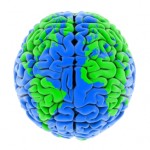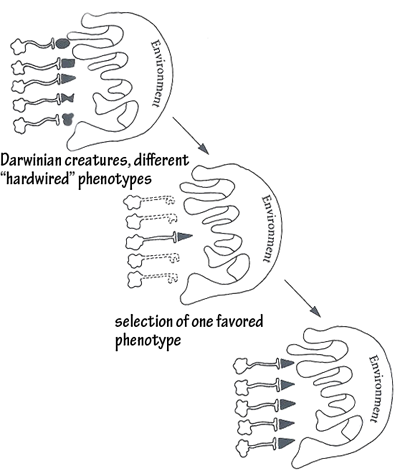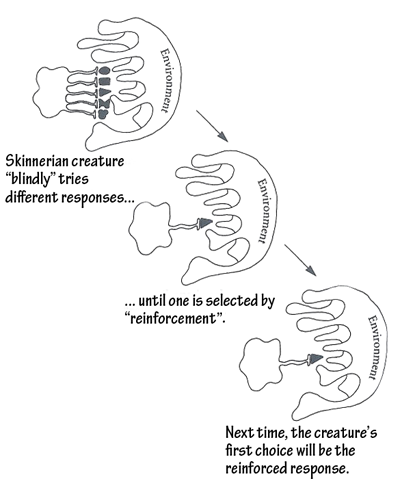Does the Earth have a mind?
By Guillaume Filion, filed under
Turing test,
ecology,
consciousness,
Gaia theory.
• 19 October 2012 •
The life of Jean-Dominique Bauby took a dramatic turn on Friday 8 December 1995. On that day, he had a cerebrovascular accident that left him in a coma. When he woke up twenty days later, his body did not respond, his brainstem was damaged beyond repair. Able to move only his left eyelid, Jean-Dominique patiently wrote a whole book, The Diving Bell and the Butterfly, where he describes his experience.
In the past, it was known as a “massive stroke,” and you simply died. But improved resuscitation techniques have now prolonged and refined the agony. You survive, but you survive with what is so aptly known as “locked-in syndrome.” Paralyzed from head to toe, the patient, his mind intact, is imprisoned inside his own body, unable to speak or move. In my case, blinking my left eyelid is my only means of communication.
Up until his death, three days after the publication of the book, there was no doubt for anyone that Jean-Dominique had retained every aspect of his consciousness. There was no doubt that this motionless mass was genuinely conscious.
The Gaia hypothesis
 But how do we know that someone is conscious, what is this thing that we intuitively identify as consciousness? And can something like, say, a planet have it?
But how do we know that someone is conscious, what is this thing that we intuitively identify as consciousness? And can something like, say, a planet have it?
It is difficult to retrace the origin of the idea that planets can be conscious, but this strange thought emerged in the 1960's. The topos of planetary consciousness came out really strong in science-fiction (Solaris by Stanisław Lem, Foundation by Isaac Asimov) and video games (Final Fantasy VII), but it is less known that it also spawned a strange child in the academia: the Gaia hypothesis.
Here I have to pause and make it clear that the Gaia hypothesis is not that the Earth has a consciousness. It merely postulates that life on Earth is self-regulating. In other words, living organisms change the environment in ways that keep the planet habitable. Yet, the Gaia hypothesis is sometimes disregarded by scientists, for its association with the new age belief that the planet cares for life (teleology or the idea that nature has a purpose is usually rejected by scientists, as explained in Lessons from Intelligent Design).
The Gaia hypothesis is often introduced through a popular computer simulation called Daisyworld. Daisyworld is a hypothetical planet where only daisies grow. They come in two flavors: the black and the white. Black daisies absorb the light and thus keep their temperature high even when light is scarce, but too much light may kill them. White daisies reflect the light and thus tolerate it very well, but they won't grow with too little of it. It is obvious that the black daisies do better on a cold Daisyworld and vice versa, but what the computer simluation revealed was that the temperature of Daisyworld stays constant over a wide range of luminosity. Indeed, at low luminosity, the black daisies increase the temperature of Daisyworld, and at high luminosity, white daisies decrease it, so that changes balance each other. An obvious criticism to this model is its simplicity. Yet, adding more species to the planet seemed to make the temperature even more stable, which is consistent with the idea that complexity makes ecosystem more stable.
So, is that it? Does the Gaia theory say that life on Earth is a system in equilibrium? In essence, yes, if equilibrium refers to dynamical systems and not thermodynamics.
But then, is it conscious?
By giving an account of the Gaia theory, I have eluded the question of how we identify consciousness. It could be argued that every system in a stable equilibrium has a form of consciousness, because when you change it a little, it will return to equilibrium — think of a metronome that you set on a slow pace and swing really fast; it always returns to the exact same tempo. It will behave as if it wants to return to equilibrium. So, does the Earth want to preserve habitability?
 Daniel Dennett in Kinds of Minds suggests that consciousness is a continuum, of which only one extreme is our good old human consciousness. Interestingly, he recognizes different classes of consciousness. A Darwinian creature has only one intention. It interacts with the environment but does not adapt to it. If anything, it is selected by the environment, but it never changes. For instance, a virus is a Darwinian creature. The Skinnerian creature adapts to the environment. It tries to interact with it at random from which it selects a state. As far as we know, a cell is a Skinnerian creature. Dennett also describes more complex creatures, which contain an inner representation of the environment.
Daniel Dennett in Kinds of Minds suggests that consciousness is a continuum, of which only one extreme is our good old human consciousness. Interestingly, he recognizes different classes of consciousness. A Darwinian creature has only one intention. It interacts with the environment but does not adapt to it. If anything, it is selected by the environment, but it never changes. For instance, a virus is a Darwinian creature. The Skinnerian creature adapts to the environment. It tries to interact with it at random from which it selects a state. As far as we know, a cell is a Skinnerian creature. Dennett also describes more complex creatures, which contain an inner representation of the environment.
 Gaia (assuming that the Gaia hypothesis is correct) is more like a Skinnerian creature. It is important to realize here that the focus and the scale matter. Even though the species that constitute Gaia are subject to Darwinian evolution, the system as a whole is Skinnerian (similarly our immune system is a Skinnerian creature because it remembers being challenged by previous infections, but this is achieved by Darwinian selection of the cells that cleared the infection).
Gaia (assuming that the Gaia hypothesis is correct) is more like a Skinnerian creature. It is important to realize here that the focus and the scale matter. Even though the species that constitute Gaia are subject to Darwinian evolution, the system as a whole is Skinnerian (similarly our immune system is a Skinnerian creature because it remembers being challenged by previous infections, but this is achieved by Darwinian selection of the cells that cleared the infection).
Dorion Sagan has a radical interpretation, that he expresses somewhat cynically in the foreword of A Foray into the Worlds of Animals and Humans by Jakob von Uexküll (University of Minesota Press, 2010).
Perhaps it is best to give at the outset what I consider to be one of the best examples of the misreading of teleology — purpose — in biology, which I hereby christen "Turing Gaia" (...) Gaia is shorthand for the realization that in the biosphere major environmental variables such as global mean temperature, reactive atmospheric gas composition, and ocean salinity are regulated over multimillion-year time spans. (...) The reason I call this example Turing Gaia is that Alan Turing defined a conscious computer as one that would be able to consistently persuade humans that it had a genuine inner self, a cyber-Umwelt. As hard-core Darwinians mistook for conscious foresight simple thermodynamic behavior modeled on a computer, growth within constraints has in effect passed the Turing test.
Considering that Daisyworld passed the Turing test is certainly provocative, and reminds us that there is no agreement on what consciousness is. Dorion Sagan confronts the Turing test with hard core Darwinism to show that their patronizing definitions of consciousness are equally dull.
Jean-Dominique Bauby was considered conscious because he was human and he could communicate with his left eyelid. Even though the way he communicated was uncommon, his language made perfect sense for other humans. If the Earth has a consciousness, it is nothing like how humans experience it. Nothing tells us that we would even recognize it. Perhaps non human consciousness is a non problem, as argued in Solaris, because communication would be impossible anyway.
« Previous Post | Next Post »
blog comments powered by Disqus

